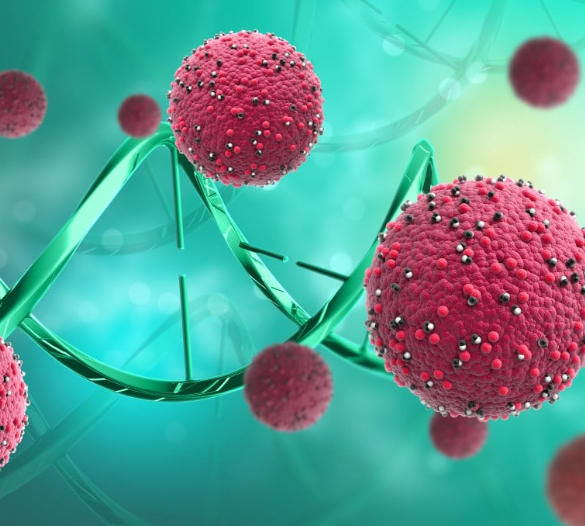most common skin cancer – Skin cancer is the most common type of cancer worldwide, and it is estimated that one in five Americans will develop skin cancer during their lifetime. The most common type of skin cancer is called basal cell carcinoma (BCC), accounting for about 80% of all skin cancers. In this essay, we will discuss the causes, risk factors, symptoms, diagnosis, and treatment options for BCC.
Dermatologist Explains Skin Cancer: Different Types, Causes, Prevention & Treatments :
Causes and Risk Factors
BCC develops when the DNA in the cells of the skin is damaged by exposure to ultraviolet (UV) radiation from the sun or tanning beds. This damage can cause mutations in the genes that regulate cell growth and division, leading to the uncontrolled growth of abnormal cells. BCC usually develops in areas of the skin that have been exposed to UV radiation, such as the face, scalp, ears, neck, hands, and arms.
The risk of developing BCC is higher in people who have fair skin, blonde or red hair, and blue or green eyes. People who have a history of frequent sunburns, extensive sun exposure, or use of tanning beds are also at higher risk. Other risk factors include a family history of skin cancer, a weakened immune system, exposure to radiation, and exposure to certain chemicals, such as arsenic.

Symptoms
BCC usually appears as a small, shiny, pearly, or translucent bump or nodule on the skin. It may be pink, red, brown, or black and may have a raised or rolled edge. BCC can also appear as a flat, scaly, or slightly depressed patch of skin that may be red or brown. The lesion may bleed, crust, or ulcerate and may be mistaken for a pimple or a sore that does not heal.
Diagnosis
A dermatologist can diagnose BCC by performing a skin biopsy, which involves removing a small sample of the affected skin and examining it under a microscope. The biopsy can determine the type and stage of the cancer, which will help determine the best treatment options. BCC is classified as either superficial or nodular, depending on its growth pattern and depth.
Superficial BCC is confined to the top layer of the skin and appears as a red, scaly patch. It is usually slow-growing and rarely spreads to other parts of the body. Nodular BCC is a raised, flesh-colored or pinkish-red nodule that can be smooth or rough. It grows more quickly than superficial BCC and can invade deeper into the skin and surrounding tissues.
Treatment
The treatment of BCC depends on the type, size, and location of the cancer, as well as the person’s age, health, and personal preferences. The main treatment options for BCC include:
Surgery: The most common treatment for BCC is surgical removal, which involves cutting out the cancerous lesion and a surrounding margin of healthy skin. The procedure is usually performed under local anesthesia and can be done as an outpatient procedure. The size and depth of the lesion will determine the type of surgery, such as excision, Mohs micrographic surgery, or curettage and electrodesiccation.
Radiation therapy: Radiation therapy uses high-energy X-rays to kill cancer cells. It is usually reserved for people who cannot undergo surgery or for BCC that has come back after surgery. Radiation therapy is often used in combination with surgery to reduce the risk of recurrence.
Topical therapy: Topical therapy involves applying a cream or gel to the skin to destroy cancer cells. The most commonly used topical therapy for BCC is imiquimod, which stimulates the immune system to attack the cancer cells. Other topical therapies include 5-fluorouracil and diclofenac.
- Cryotherapy: Cryotherapy involves freezing the cancerous lesion with liquid nitrogen. The procedure is quick and usually done in the doctor’s office. Cryotherapy is typically used for small, superficial BCCs.
- Photodynamic therapy: Photodynamic therapy involves applying a photosensitizing agent to the skin and then exposing it to a special light source. The light activates the photosensitizing agent, which destroys the cancer cells. Photodynamic therapy is usually reserved for small, superficial BCCs.
Prognosis
BCC is usually slow-growing and rarely spreads to other parts of the body. However, if left untreated, BCC can invade deeper into the skin and surrounding tissues, leading to disfigurement and, in rare cases, death. The prognosis for BCC is excellent if detected and treated early. The five-year survival rate for BCC is over 95%.
Prevention
The best way to prevent BCC is to protect your skin from UV radiation. This can be done by:
- Seeking shade: Stay in the shade during peak sun hours, which are usually from 10 am to 4 pm.
- Wearing protective clothing: Wear a hat, long-sleeved shirt, and pants to cover your skin.
- Using sunscreen: Use a broad-spectrum sunscreen with an SPF of 30 or higher and reapply every two hours.
- Avoiding tanning beds: Tanning beds emit UV radiation and increase the risk of skin cancer.
- Checking your skin: Perform regular skin self-exams to check for new or changing lesions.
Conclusion
In conclusion, basal cell carcinoma is the most common type of skin cancer, accounting for about 80% of all skin cancers. BCC is caused by UV radiation exposure and typically appears as a small, shiny, pearly, or translucent bump or nodule on the skin. The main risk factors for BCC include fair skin, blonde or red hair, blue or green eyes, and a history of frequent sunburns or tanning bed use. BCC can be diagnosed by performing a skin biopsy and is usually treated by surgical removal, radiation therapy, topical therapy, cryotherapy, or photodynamic therapy. The prognosis for BCC is excellent if detected and treated early, and the best way to prevent BCC is to protect your skin from UV radiation.


